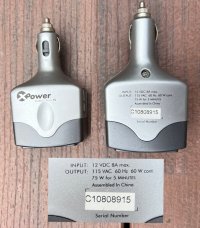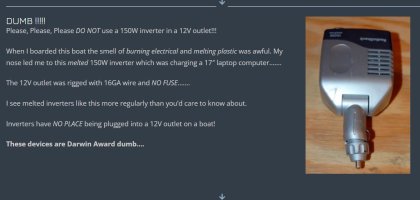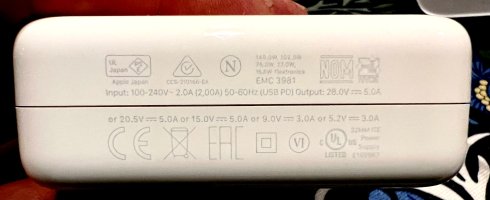Oh, those things work, as long as your circuit has sufficient capacity to provide the 12V input to them. 75 watts out of the inverter probably suggests needing at least 15 amps out of the 12V DC circuit feeding the inverter. Check your fuse and the wiring gauge to see how feasible that is for your setup. “75W for 5 minutes” means that it is being pushed to its limits and will overheat and shut down after 5 minutes at that output. Your laptop charger probably doesn’t draw that much - and even if it can, it almost certainly doesn’t over the entire cycle of a battery charge.
i’ve found them useful for charging tools, laptops, and multi-port USB chargers - and not much else. From an engineering standpoint it is embarrassingly inefficient to use them for this purpose (12V DC > inverted to 110V AC > rectified back to DC for charging) but it is convenient and in absolute terms it is a negligible amount of power. I have not found them useful for powering plug-in drills or saws...or anything larger than a Dremel tool, really.
A few other considerations:
* they are far bulkier than was ever imagined when the 12V “cigarette lighter” socket was designed (1950s?), so they have a habit of slipping out of the socket and disconnecting. It is a terrible idea to have those sockets set up vertically, allowing gravity to support the inverter’s placement, because if a coin were dropped into the open socket, strange smells and lights would emanate from therein. So their placement is horizontal and big devices slip out. You have to check them often.
* they are designed for use when the engine attached to the 12V power is running. When that is happening, the voltage provided to the inverter is actually more like 14V, so they draw less current to provide a certain wattage (watts, or power, equals voltage times current; if voltage goes up, current goes down at a certain power level, and fuses respond to current). When the engine is not running, they draw somewhat more current and get warmer, more finicky, and are more likely to blow fuses in the circuit.
* the AC power they produce is generated using relatively simple circuitry, and doesn’t have the smooth “sine wave” shape that real wall power has. Their output is more of a “square wave” which can affect some electronics. I’ve never noticed a particular issue except that it seems to make chargers run notably hotter than they do on wall power.




